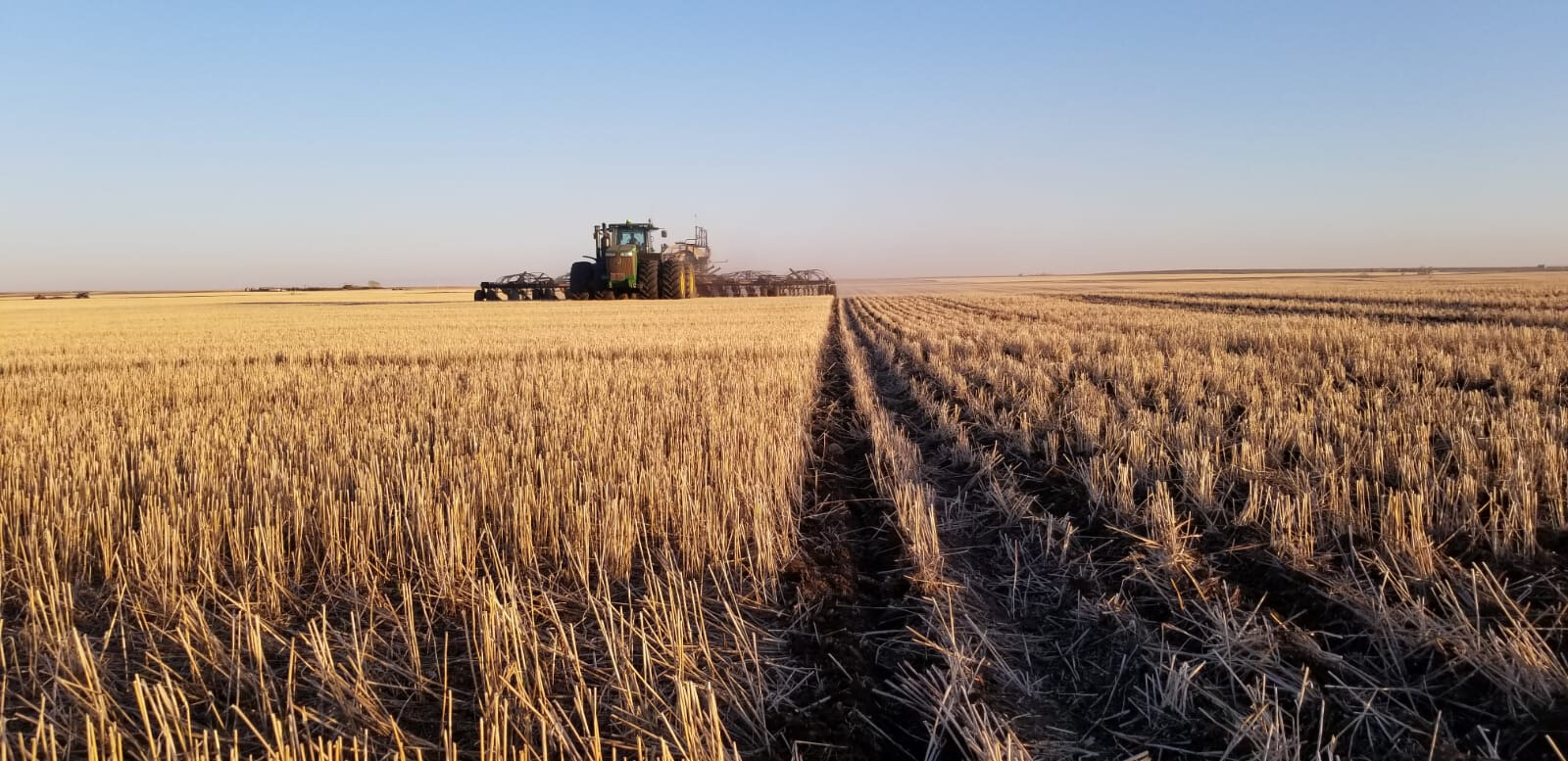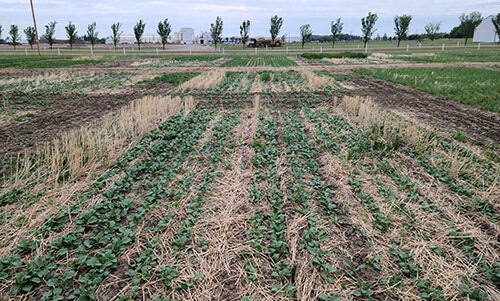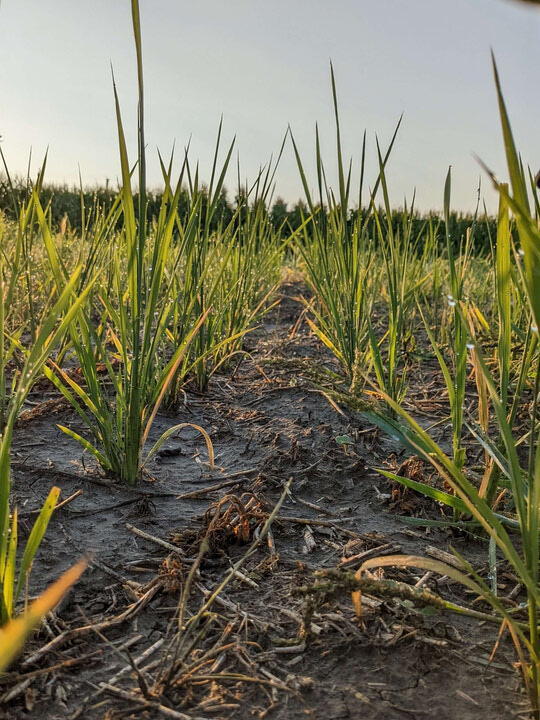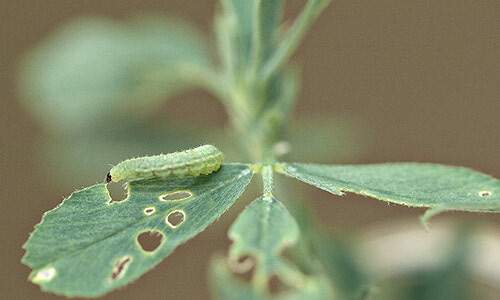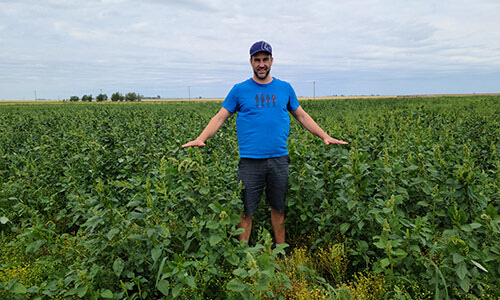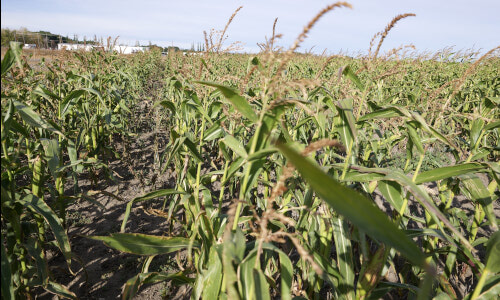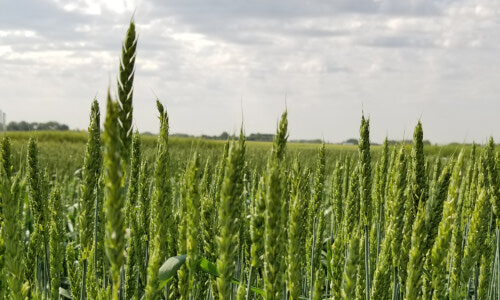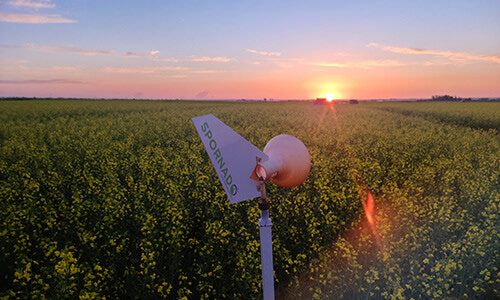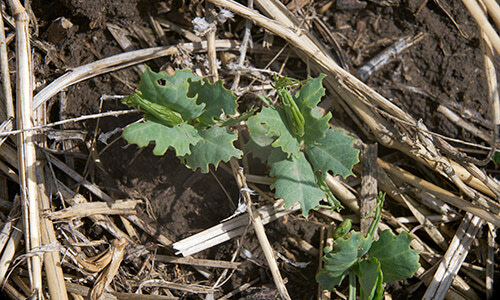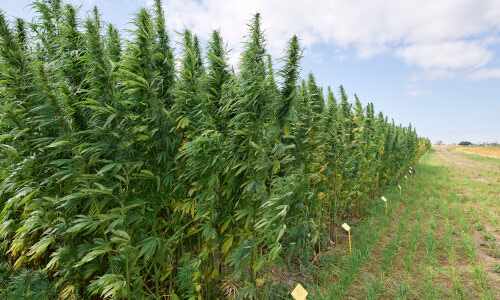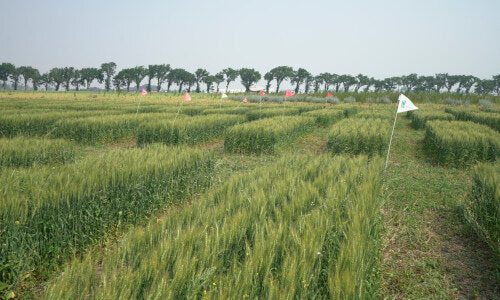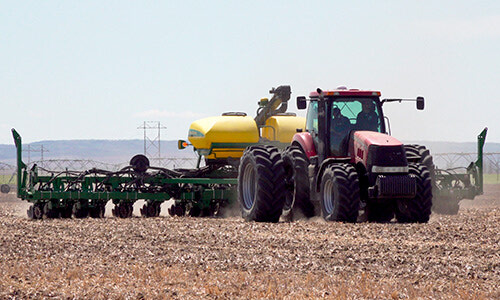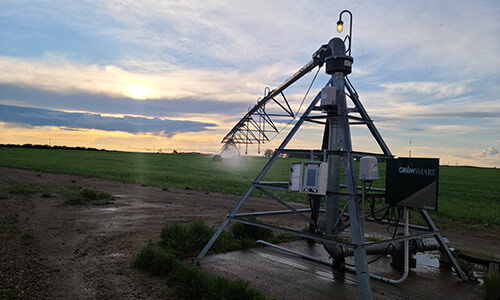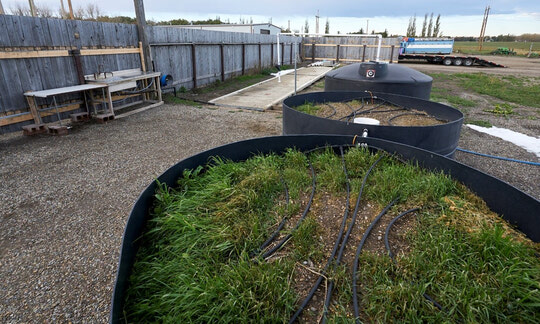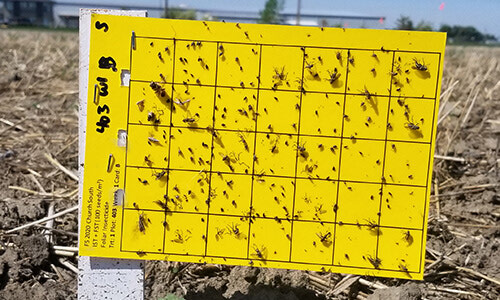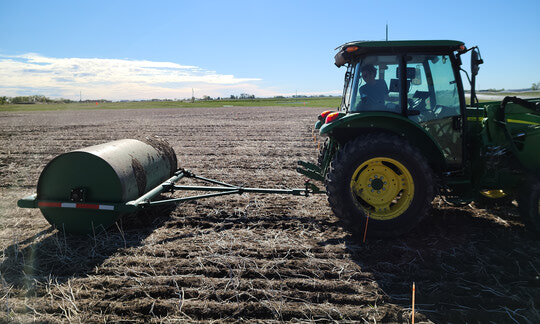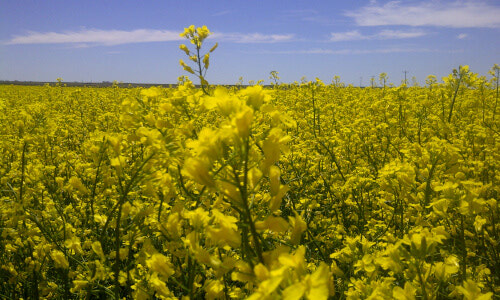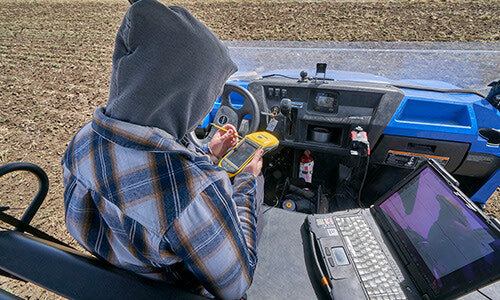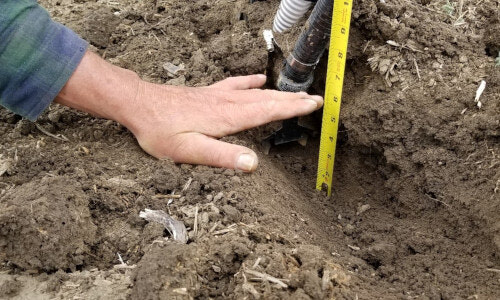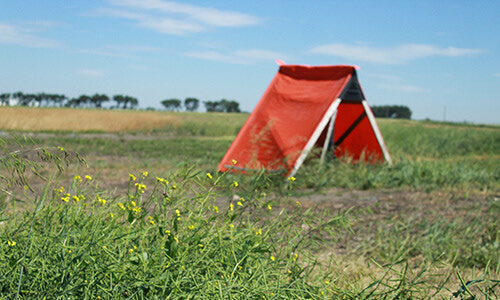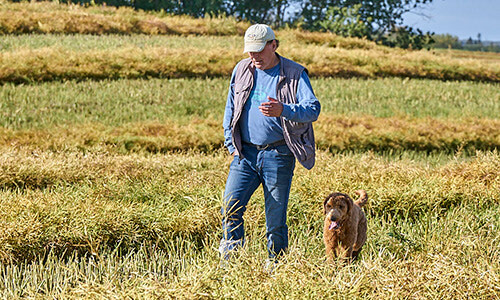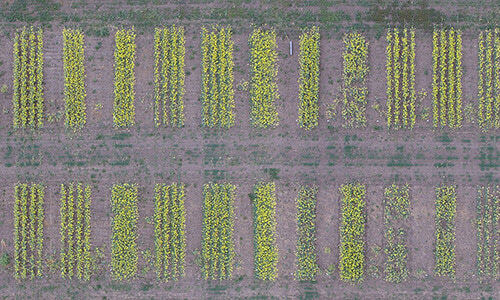All Research Projects
2017-2023
This project will evaluate the viability, impact, and benefits of including cover crops in crop rotations across Prairie Canada (including MB, SK, and AB).
2022-2023
An exploratory project initiated spring of 2022 to evaluate feasibility of upland rice production in southern Alberta.
2021
Alfalfa weevils are a pest in seed alfalfa production because the larvae eat the flower buds off the plants. This study focuses on testing several insecticide options for farmers, aiming to help them protect their crops from this pest.
2019-2023
Glyphosate resistance in kochia populations is a growing problem, with over 50% of strains carrying resistance. This study looks at site-specific patch management in an effort to reduce and/or control local populations.
2019-2023
Precision planters are typically used to seed conventional row crops such as corn or soybeans, however producers are experimenting with them to plant small grains and other crops.
2019-2022
Canada and the U.S. produce approximately 86 MMT of wheat per year. Still, grain yield in both countries rarely surpasses 50 bu/ac. This project aims to identify the management practices that contribute to higher yields.
2022-2023
Industrial hemp has emerged as an important multi-purpose end-use crop with a strong and growing market demand in Alberta. The lack of effective strategies for proper management of weeds is one of the major challenges to hemp producers in Alberta.
2020-2023
Many diseases that infect and devastate crops are due to spores that are deposited in field by air currents. These diseases are often difficult to identify until it's too late to effectively prevent them.
2021-2022
Winter crops provide a distinct advantage over spring crops in extending the growing season under western Canadian conditions.
Ongoing
Distribution and abundance of insect pests in Alberta that affect field crops is correlated with climate, weather, agronomic practices, and natural enemies.
2018-2022
This project combines seeding rate and date trials that were separate in the first project to study their interaction effects. The fertility trial determines the optimum rate and timing of fertilizer to maximum hemp fiber and grain yield.
2018-2022
Fusarium head blight (FHB) has become a major limitation to cereal crop production across much of the prairies in recent years, particularly for bread and durum wheat growers, and the disease is also impacting barley growers.
2019-2022
This trial is takes key findings from Farming Smarter's small plot precision planter research program and evaluates performance in a real-world field environment, fostering adaptation development and adoption.
2021-2022
We propose to develop, deploy, and assess an automated, sensor-integrated open-source system to provide continually updated irrigation prescription maps for variable rate irrigation systems with our farm partner in Alberta.
2019-2022
This project allowed Farming Smarter to build a large-scale biobed to biofilter rinsate generated from our research activities.
2020-2021
Flea beetles are one of the major canola pests in Alberta. Currently neonicotinoid-based seed treatments are often used to protect canola seedings from flea beetle damage.
2018-2023
The development of high value specialty crops is crucial for a diversified and robust agricultural industry in Canada. It is very important for on-farm profitability and is a key driver for value added industries.
2020-2021
This project sets out to find the effects of rolling barley at various stages of crop growth and to recommend best management practices for successful crop growth and yield.
2018-2021
The goal of the Canola Performance Trials (CPT) is to evaluate currently available commercial canola seed varieties available to farmers.
2019-2021
This project evaluated the use of the EM38 soil conductivity sensor as a real-time soil moisture mapping tool. Real-time data collected in-season could allow farmers to use a near real-time efficiency of crop production inputs ...
2018-2021
This study determines if the periodic deep banded application of immobile nutrients (P, K & Cu) can reduce nutrient stratification while improving nutrient uptake and crop production on land previously under direct seeding for >10 years.
2019-2020
This project experimented with using pollinator sanctuaries on marginal lands to address the serious decline in bee populations experienced in recent decades. Pollinators help numerous crops like canola, clovers, alfalfa.
2019-2020
Detector dogs have even been used to detect infections, pests or diseases by their unique scents. This project evaluated the potential to use canines to detect clubroot in fields in southern Alberta.
2016-2018
Hailstorms can be responsible for significant economic loss to the agricultural sector in Alberta, Canada. Foliar applications of certain fungicides and nutrient blends have been advocated to promote recovery and yield of hail-damaged crop

